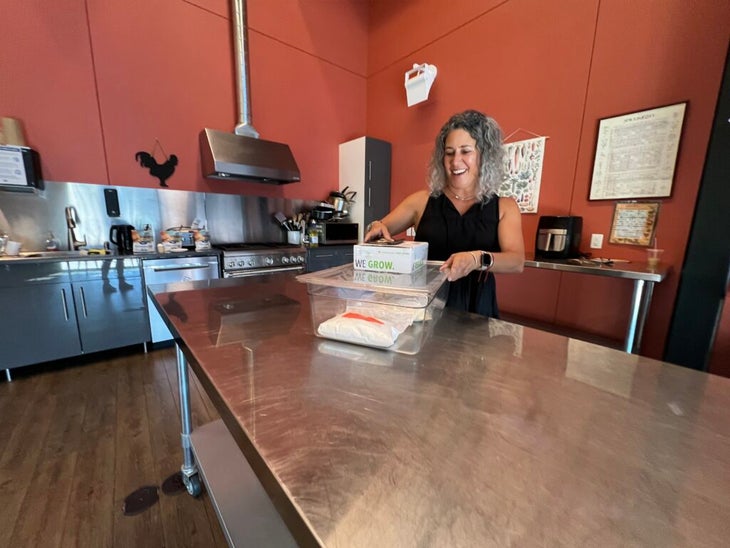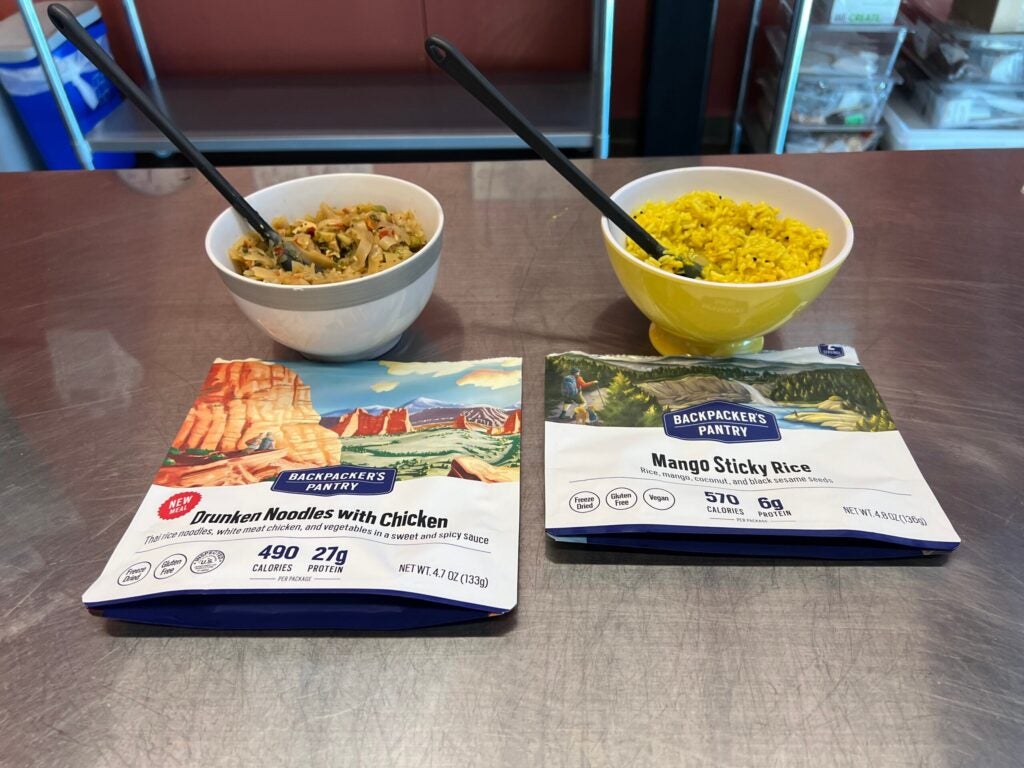No products in the cart.
Outdoor Adventure
What Are Your Backpacking Meals Really Made of?
Don’t miss a moment of the 2024 Tour de France! Get recaps, insights, and exclusive takes with Velo’s daily newsletter.
Sign up today!.
A faint whiff of cumin and cracked black pepper serenades my nostrils, reminiscent of the Indian spice markets I once visited in my mid-twenties. Only, I’m not in South Asia, or even the back storeroom of a hip Thai restaurant; I’m in my hometown of Boulder, Colorado, touring the massive factory where Backpacker’s Pantry meals are made.
My host for the morning is Soraya Smith, the company’s president and recipe-development chef. Smith, who had always been involved on the recipe side of American Outdoor Products (the parent organization of Backpacker’s Pantry) took over as president after her husband, Rodney, died in a tragic ski accident in 2020. She’s been the face of the family-owned corporation ever since.
“I’m from a foodie family,” explained Smith. “My mom is Spanish-Italian, and my father is from Iran, so we’re very multicultural. I also went to Culinary School of the Rockies before stepping into this role.”
I’ve always been curious about how backpacking meals are made. After all, getting to enjoy a steamy bowl of risotto or curry after merely boiling a pot of water is as close to real magic as you can get in the backcountry. So, I asked Smith to give me an insider’s look at how some of my favorite freeze-dried backpacking meals are made.

Our first stop was the test kitchen, where Smith pulled different dry ingredients together to experiment with new recipe ideas. To be totally honest, the various plastic bags she grabbed out of a large bin looked more like the Parmesan cheese packets you’d get for free with your pizza delivery than high-quality foodstuffs. But therein contained the secrets to my favorite post-hike meals: proprietary flavorings and mixes, which Backpacker’s Pantry makes with freeze-dried ingredients.
As we entered the factory’s enormous storeroom, I asked Smith for a refresher: What exactly is freeze drying?
Freeze-drying technology was used extensively by NASA during the space boom of the 1960s. Since freeze-dried food retains more than 90 percent of its original nutrients, it’s the best way to keep astronauts stocked with nutritious food. Better yet, the food can last for years without going bad.
When an ingredient is freeze-dried, it’s brought to an inhospitable -60°F, then back above freezing multiple times while inside a vacuum chamber. That way, only the ingredient’s water content is removed. “Some companies make a large sheet of, say, lasagna, cook it, and then dehydrate it,” Smith said. “We, on the other hand, mix each of our freeze-dried ingredients into the bag, so that when you add that boiling water, most of them are getting cooked for the first time. It’s fresher, and I think it has a better texture.”
Smith and I strolled past huge palettes of rice noodles, sourced from Thailand, and pasta, sourced from Belgium, but Smith explained that the company does its best to source most ingredients domestically.

Once workers grab individual ingredients from the palettes in the store room, they go to the dedicated mixing room, where seasonings and starches are stirred together in large tubs. The room looks like a sterile, high-tech scene out of Willy Wonka.
Here, Smith points out that the brand adheres to a strict allergen separation system. For instance, a recipe with gluten won’t get run through the machines on the same day as a gluten-free recipe to protect customers with gluten intolerances. Ditto for dairy products. (Workers clean the machines thoroughly at the end of each day by passing them through a chrome-covered, bedroom-sized industrial dishwasher.)
After mixing, the meals are mechanically portioned out by category—sauce, starch, meat, and vegetable—then sealed by hand. Workers sample the meals throughout the day, preparing a baggie to taste-test at the beginning, middle, and end of each run. The goal is to ensure the flavors remain consistent throughout. Forks and counter space are set aside in the test kitchen for this specific purpose. If something doesn’t taste right, they ditch the batch and correct it.
The Backpacker’s Pantry factory produces thousands of meals each day. Once the day’s meals get sealed, boxed, and quality checked, they head into a gigantic storeroom, which then ships the products to big retailers, like REI, as well as directly to consumers.
As I closed the huge warehouse doors behind me and concluded my tour, I was surprised to feel tremendously better about all that just-add-water food I’d been eating. The ingredients were both fresher than I’d imagined and more rigorously quality-checked. Ninety percent of their original nutrients, huh? Heck, maybe I’ll toss a couple under my desk to eat in the office.
4 Tips for Sprucing Up that Backpacker’s Pantry Meal
Freeze-dried meals can be a life-saver in the backcountry, but even the staunchest creatures of habit sometimes tire of their favorite flavors. If you’re not big on dehydrating food yourself, here are a few things you can do to spice things up and keep mealtime feeling fresh.
- Mix two meals together. “One of the most popular ways that people modify our meals is to mix together our Wild West Chili & Beans with the Three Cheese Mac & Cheese,” says Smith. When you combine the two meals, you have a protein-packed vegetarian entrée that’s big enough to share.
- Add more veggies. One of my favorite ways to up the fiber and nutrition content of a pre-packaged camping meal is to pack extra veggies into the pouch so that they all rehydrate together. These days, there are loads of options available, but my favorite is this variety pack from Harmony House.
- BYO Sriracha. If you’re a spice fiend, toss a couple of lightweight hot sauce packets into your bear canister before setting off. (To my dismay, I learned Backpacker’s Pantry Pad Thai no longer comes with a Sriracha powder pouch.)
- Don’t forget the fat. “Fatty things, like avocados, don’t freeze-dry well,” explained Smith. Packing olive oil pouches to add to bagged meals is a good practice for adding extra calories during thru-hikes. Another of my favorite ways to add fat to meals: Bring a hunk of dry, aged cheese (like Parmesan) and shave pieces into a pasta dish with your pocket knife or multitool.
Source link

